DMV Or Dentist’s Office
Staring at the coffee-table-book,
Tired, wrinkled magazines,
I sigh, and take another look,
At the plastic clock on the wall,
Of this waiting place, the
Clock hardly moves at all…
copyright J.P.N. | Poetry, Etc., From Kanagawa, South of Tokyo, Japan
www.carllafong.blogspot.jp
Life and Island Times: West Coast
The coastline from corner #2 to southern California is a near continuous mountain ridge of cliffs and sandy and rocky beaches. In many areas the mountains and coastal sea cliffs are volcanic in origin. When the lava rose along the sea coasts, hot and boiling, great blow-holes formed, and hardened to make caves. These are exceedingly beautiful formations.
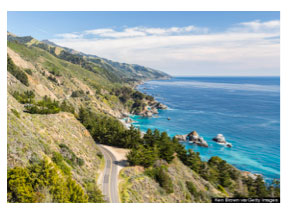
There are kelp-beds along the shore, and the combination of deep water, kelp, and small fish is what makes the near shore seas and coastline so rich and bio diverse.
During past journeys along the Pacific Coast Highway, the riders saw acres and acres of sea mammals lolling about beaches and sea rocks, dozens upon dozens of whales trekking north or south on their annual migratory pilgrimages.
The color of the seas was almost always indigo blue, clear as crystal. Ever a fascinating thing for them was to park their bikes, sit a spell and watch the waters and shorelines for new and different vegetation, strange marine creatures, and the odd assortment of west coast human life that was so different from that found in the rest of the country.
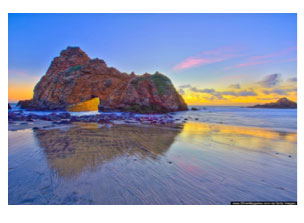
And the watching was always rewarded.
Often they would rest high up on a cliff, in the lee of a rugged rock when it was windy. These perches could be rust-stained and gray-lichened with deep cactus-covered canyons to one or both sides. Their observation posts could also be long, gentle, yellow and sloped with wild sea oats and grasses all the way down to a narrow rocky beach. It was these places where they would find the perfect space to observe majestic and grand ocean white rollers move in graceful heaves along the deep blue to the rocks well below their feet. These shorelines were at times curved gravelly beaches interspersed with jutting rocky points. They loved the creeping white lines of foam adjoined further out by green water spotted by beds of golden kelp. Beyond were the depths of the deep blue.
At times from these places, they had been within a whisper’s reach of seals, otters, heron, all of whom were blithely ignorant of human presence. Watching the great whales play offshore always was a special treat. When they were lucky, they were enchanted by the spectacle of whales rolling and dipping their enormous bodies, lifting huge, glistening tail flukes which were as wide as a house. A few times they saw sharks cruise the surf waters and take their meal at the foamy buffet.
They loved watching the fish leap. Some were round, glistening and awkward. Shark leaps were like submarine launched ballistic missiles. These monsters were announced by their prey’s frantic attempts to escape. A few times they were lucky to catch a swordfish leap. These purple monsters tail dancing atop the exploding whitewater took their breath away. Only slightly less amazing were the two sightings of several killer whales dorsal fins cursing the waters just beyond the surf for a meal.
Once a big black bird, perhaps a raven, soared by with dismal croak. The wind then rustled the nearby sea oats. There was no other sound but those of the sea – deep, low-toned sharp boom or the occasional long crash.
They saw the monarchs of the air — the great white headed bald eagles in their native haunts. One time there were two adults chasing out a nestling with shrill, piercing screams. The trio disappeared in an adjacent canyon, while a lonely gull flew into view as it glided just above the swells. This life was beautiful, particularly this elemental life.
Small brown hawks would rest motionless in the wind with quivering wings, poised to strike prey as they looked down for some luckless lizard or rat. Seemingly suspended on wires, once alerted they would descend like a brown flash in a sure swoop that meant a meal was about to be served.
There was rapture on the white tipped ocean waves, rapture on the lonely shore, and indeed rapture high above it all.
The American Pacific coast had been consecrated millennia ago to the sun and the sea. It was barren for the most part with lonely prospects for the lushness of the Atlantic coast nearshore only seen here and there. Its flat plateaus above the beaches were an empire of the sun, where heat veils rose and mirages haunted the eye. But at sunrise ocean fog rolled up and in. So, if the sun blasted the life on the coast, the fog would save it. So there was perpetual war between sun and fog, the one that was the lord of day, and the other the morning savior.
In uncounted coves of various names, the beauty could be infinite. Great curves would indent the sloped coastal plain, at each end of which low, ragged black rock lines jutted out into the sea. These bare amphitheaters had no growth save scant cactus and patches of grass. A careful observer could see the almost imperceptible long lines of shelves where Pacific sea-levels had been in the past.
Life in, above and along the wild Pacific Ocean and coast was strange, complex, ferocious, and wonderful.
Copyright © 2017 From My Isle Seat
www.vicsocotra.com
Arrias on Healing Health Care
 The President is looking at unraveling the Affordable Care Act (the ACA, commonly referred to as Obamacare) and replacing it with something that is less expensive and at the same time giving citizens more options in their health care.
The President is looking at unraveling the Affordable Care Act (the ACA, commonly referred to as Obamacare) and replacing it with something that is less expensive and at the same time giving citizens more options in their health care.
Less expensive is key. Since the ACA was passed in 2011, health insurance costs have soared and are heading higher still. As of last November premiums were set to rise an average of 25% in 2017, in the 39 states served by the federal market.
While many will receive subsidies to help pay that increase, subsidies will mean that the taxpayer will ultimately foot the bill. And you can be certain that some of the bill we be dropped into next year by raising the deficit.
Before going any further, it might help to consider a few simple concepts.
When this began, there were some 250 million Americans covered by some form of health insurance. When the ACA was passed, that number jumped. The goal was to reach 280 million, leaving about 10% of the citizens uninsured. Without going into whether ordering people to buy health insurance is Constitutional or ethical, someone should have seen a problem.
The problem is this: if you have a health care system providing care to 250 million, and you add 30 million to it, you have less health care per person when you are done. It doesn’t matter how you get there, you have less per person.
How bad? While the overall ratio of doctors to citizens is staying roughly the same, that trend line appears to be in part due to doctors remaining in practice longer, with more doctors practicing medicine well past age 65. However, there is a trend of more doctors entering into specialized healthcare and fewer into general practice. That translates into fewer doctors providing basic healthcare, meaning more “rationing” of doctors, and higher costs – to be met with higher insurance rates.
Perhaps this shortage can be met by expanding the role of nurses in primary health care?
Certainly, except for one minor point: the shortage of nurses is expected to reach roughly 1 million in the next 5 years, with roughly 2 million nurses in practice in the US (the need is for roughly 3 million, measured in ‘Full Time Equivalents.’)
In short, no matter what’s happening with the efforts to unravel the mess caused by the ACA, and no matter what steps are taken to address health insurance pricing, none of that is going to matter unless we address the question of supply: the United States needs to expand the “supply” of doctors and nurses.
Practically speaking, that can’t be done in the short term except by “robbing” from someone else. Even as we sit and debate the rules for immigration, the US will need to find ways to attract more doctors and nurses to this country over the next 5 years. Options to provide incentives seem limited: a special tax category perhaps for a medical professional who moves to the US.
To address the long-term problem, any health care program needs to provide some mechanism to expand the “production” of doctors and nurses. What that means is more graduates from medical and nursing schools, but that really translates into more medical and nursing schools. Simply putting more students in any class will in the end dilute the “product.” The real solution requires more schools.
But it doesn’t end there. The other shortage is in residency programs. The residency programs need to be expanded now if we are to meet the needs of a population that will reach 400 to 450 million by 2050. The government needs to identify both incentives for new and expanded medical and nursing schools, and new residency programs, as well as eliminating institutional roadblocks to expansion. And these programs should include planning and sizing to meet the need for that future population growth so that we don’t repeat this problem in another 30 years.
Government planning and interference in health care has been at least partly responsible for the increase in costs over the past decade. The government now has an opportunity to take another look at the health care industry, and working with the industry, academia and the citizenry, chart a different course, one that actually steers us around the problems generated by previous administrations.
Copyright 2017 Arrias
A Matter of Trust

(Tinker Belle holds down the Willow bar).
Willow was having one of those golden afternoons where the doors to the patio were propped open and the dust motes glowed in the rays of the lowering sun.
Jasper was running around as always- I don’t know when he doesn’t work- and Tinker Belle was handling the mixology behind the bar, awaiting Brett’s arrival at cocktail hour to handle his second job of the day. He is actually a computer programmer, or a movie star or something most of the day.
Mac had motored over to the bar in the Jag, claiming to feel a little tired, but he was ready to speak, and I let him. Old Jim was listening to his MP3 player at the apex of the Amen Corner.
“So, it is the mid-1970s. You are moving around in the various staff elements of the IC Staff as a special assistant.
“I was. There were other personnel who were coming and going, as there was considerable turbulence in the staff, both personnel-wise and organizational. It was natural, since the Pike and Church commissions had made so many demands on the IC. As the DCI’s agents for compliance, we tried to feel our way and better establish ourselves in the Community. We were still housed in the CIA building at Langley. Later we moved down to the old Selective Service building near the White House, since everyone thought that because we worked on the sixth floor of the Original Headquarters we were a wholly-owned subsidiary of the Agency.”
“The Agency still thought so, too, and that was twenty years later.”
Mac smiled over the rim of his glass. “We were still treated with suspicion by most elements of the IC. The work that we were doing, except in the program and budget areas, continued to be highly suspect by all concerned. Danny Graham took a crack at being the director of the staff, I think temporarily, before he became Director of DIA. He had served with us on the staff from the Schlesinger days, and he moved up to be interim director before Sam Wilson came. But I think it’s safe to say that, after Bill Colby got himself well settled in as DCI — he having been an old hand in intelligence, and he clearly knew where he was going- when Sam Wilson came in as Director of the IC Staff, I think Sam more than anyone else put order into the work of the IC Staff. It wasn’t something that he could do too quickly, and it evolved over time. But he was there long enough to do it, to actually accomplish it.”
“There is an ebb and flow to staff organizations. Look at the Director of National Staff. It is getting huge since it was implemented. But you were done with Program and Budget and were a trouble-shooter for Director Colby?”
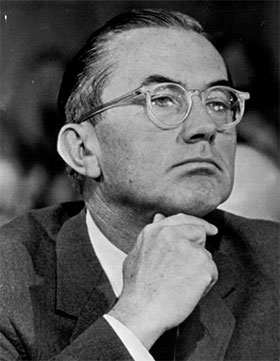
(DCI William Colby testifies to Congress).
Mac nodded. “The DCI performed functionally and legally as the Pater Familia of intelligence. In a sense, we were clearly a projection of the DCI because he had legal responsibility reinforced by subsequent congressional actions to oversee and coordinate the whole shooting match- responsibility without the complete authority to tell people what to do. But many departments and agencies in the community outside of CIA continued to treat us with circumspection, if not outright contempt. They never took us fully into their confidence on things that they didn’t think we needed to share. We were effective in coordinating and consolidating the program and budget.”
He took a sip of beer and smiled in pleasure. “In other activities,” he continued, “We didn’t fare as well. In order to gain respect, and I think that’s the best way to word it, the IC Staff, as it grew, tried to do things that they conceived as perhaps not being done well or as completely by the individual elements of the community and that could maybe be done better and more effectively centrally. That’s one reason that we got into post-mortems, for example.”
“What was a ‘post-mortem?’ ” I asked. Something like the USS Pueblo Damage Assessment you worked on at DIA?”
“Yes, but more comprehensive. The thinking was that the IC Staff should look over the involvement of several agencies in a given action from a strategic perspective, assess if it could have been done more effectively and make recommendations on changing things.”
“I imagine that would be quite a threat to the agencies, if they thought they were being second-guessed after the fact.”
“You bet. I think the post-mortem effort fell on its face because the other agencies, if they had performed poorly, didn’t want to share it with the IC Staff or other elements of the Community who would try to grab their resources or mission. We did try, though. I participated in the Mayaguez post-mortem.”
“That was the official last combat mission of the war in Southeast Asia, and we left Marines behind.”
“Yes, and not a pretty tale. But I knew we were not getting the full story from all of the agencies and I knew we were not going to be able to write reports that would be complete and accurate. But as usual here in Washington, nothing is either of those things. I was happy in 1975. At that time, certain legal actions of the Attorney General put a job on the DCI’s that required full-time attention and the continuity of at least one person in order to make sure things went smoothly. All I can say was that it was in the electronic surveillance area ”
“You are being cagey, Admiral. Is that what we are not going to talk about?”
“The very one,” he said, taking a sip of his beer. “I worked that program until I retired for the second time. Those duties took up about half of my time. In the rest of it, I worked things transition issues between the Ford and Carter Administrations.”
“Now you getting into territory I actually remember,” said with a laugh.
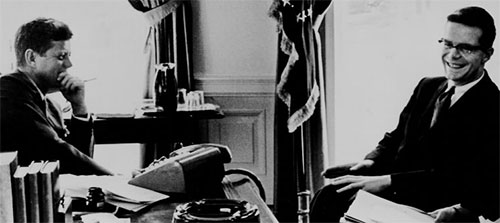
(JFK and Ted Sorenson at the White House. Photo AP).
“Whippersnapper,” he said with a laugh. “I helped brief Ted Sorensen prior to his confirmation hearings, and frankly it was no surprise to me he didn’t get confirmed. I thought in briefing him that he had relatively low regard or low appreciation for security. If you look it up when you get home, I think you’ll find he was charged with some security laxity over time that didn’t speak well for himself and for his earlier service to President Kennedy.”
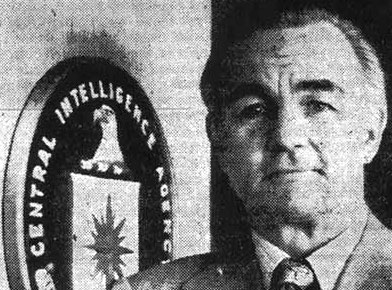
“Admiral Stansfield Turner became second choice, and he was brought in as a nominee. Admiral Turner spent, I think, approximately a month getting ready for his confirmation hearings. He was given an office in the Old Executive Office Building with a small group of people, most of whom he brought in with him from duty stations in the Navy. Some of the people had been with him since he was at the Naval War College at Newport and also had been with him over in Naples. They were neither intelligence officers nor intelligence experts, but the point was that Admiral Turner clearly relied on them ahead of the advice he got from other people.”
I smiled, since it was a familiar story. “I knew one of them- I forget his name- but he was on the Senate Intelligence Committee and he told me once it was eerie working there. He said the Turner people were treated as almost being invisible.”
“I think that is an accurate assessment. Of course, we were downtown and out of the Headquarters by then, and out of sight, out of mind.”
“So you had an Intelligence Community that did not trust the IC Staff and a DCI who trusted no one.”
“That is about the size of it. Our time with Admiral Turner was not a placid one.”
“But you kept working right up through the election of Ronald Reagan as President?”
“I did. I was a special assistant to Bill Casey. That was an interesting man.”
“I bet. And then you retired again in 1984?”
“Yes. We discovered that Billie was ill with something really sinister. Alzheimer’s, the early onset kind. It was time for me to stay home and become a caregiver.”
I gave a little shiver, since Dad had just succumbed to that cursed disease the past January. Watching his steady decline from dashing Naval Aviator and yachtsman to wasted shell was a wrench for five long years. “I know how awful the process is. You helped me a lot in knowing how to deal with it.”
“We managed to keep Billie at home for almost ten years. And that is what got me involved with volunteering with the support groups. But that is another story.”
I nodded in agreement. I reached for my wallet after underlining the phrase “fucking dementia” on the cocktail napkin in front of me. In many regards, Mac’s third career might have been the hardest of them.
Copyright 2017 Vic Socotra
www.vicsocotra.com
Life and Island Times: Kootenai & Corner #2
Over breakfast at Two Dog Flats Restaurant, Augustus reviewed for Rex and Marlow the next two days’ itinerary. It would be two easy segments of mostly straight roads through a park, nature preserves and then the Cascade Mountains and forests along Washington’s northern border with corner #2 being the final stop.
Two Dog Flats was lush grassland. These plains continued as the riders exited the park and entered once again the Blackfeet Indian Reservation.
They headed north on US 89. The Blackfeet people dominated these plains they called “The Backbone of the World” long before any European explorer entered the area now known as the Rocky Mountains. They believed that these mountains of glaciers were the home to spirits of the members of many area tribes. All warriors were called to journey this backbone on vision quests.
Consequently before heading west, the bikers viewed the park’s famous glaciers. They weren’t what the riders expected, being more like small, snow-covered piles of ice scattered on a few mountainsides. The park hadn’t hosted towering or impressive ice formations for many decades.
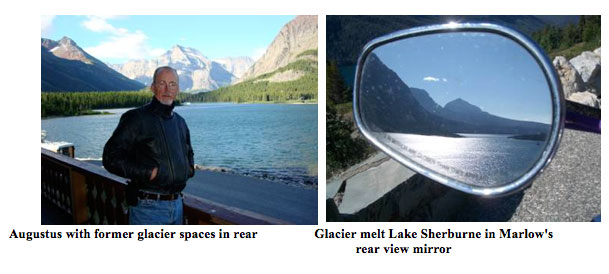
Afterwards, they bisected Glacier National Park and crossed the Continental Divide by taking the east-to-west Going-to-the-Sun Road. Based on what they saw, it should also be known as the Rainbow Highway due to the many rainbow waterfalls along or near the road. One special place was the Weeping Wall which bedazzled and refreshed tourists. The spray soothed the riders mountain-air parched lips.

As an added bonus, this was the first day in the last six where delays due to detours or road construction sites were both minimal and short in duration. Consequently, they arrived mid afternoon at Bonner’s Ferry, Idaho, on the Kootenai River.
Their motel for the evening had a first-rate cocktail bar with 10+ foot high windows looking out onto the duck and goose filled river and sandbars.
Ensconced at the bar for several relaxing hours, they had a fabulous view of the evening’s goose rendezvous overhead the Kootenai river. It was a Keystone Cops comedy of errors.
There were many raggedly-looking, geese V-formations approaching the river at the same time. The adults in each formation’s lead adhered to an innate marshalling pattern altittude separation. Midair collisions were thus avoided.
Landings, however, were hilarius. Despite the mamas’ and papas’ honked encouragement, the kids had poor intervals from their sibling formation neighbors and, with beaks too high or too low, landing long, short and all over the place. Parental squawking at their juveniles poor performance resulted in many ruffled feathers. Thankfully things quieted down quickly after the sunset. These feathered nugget aviators were not yet ready to join the amphibious fleet air corps.
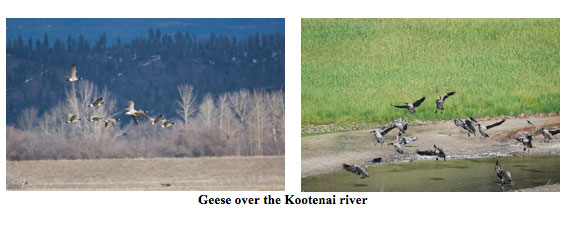
The next day found them stopped at several more, albeit brief, road construction stops along Washington route 31. At the last one they met a 40ish Native American gal. She looked and sounded like a shorter and somewhat svelter version of comedienne Rosanne Barr. For more than 25 minutes they stood in the speckled sunlight, occasionally test-kicking the newly chip sealed road surface and idly chatted about the area and her construction crew job.
Most of the day was spent traversing Washington and its upper Cascade Mountain range along route 20. It was a scenic 300 mile two-lane road that was in good repair. Route 20 was once one of the state’s two east-west mainlines before the interstates came along. It was full of nice sweeping turns, steep-walled canyon valleys, mountaintop ridge rides, streams and lakes. Its emptiness’ pleasant balm was enhanced by the high 60s dry air temps.
These leather-clad, asphalt hobos wished this northern railroad ride would never end. Reluctantly, they bade the Cascade Highway a fare-thee-well as if it were an old lover, never expecting to see it again. For in this world they were bound to ramble.
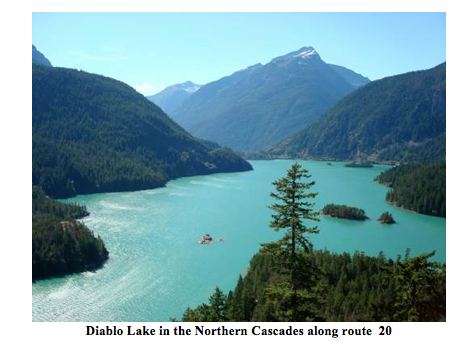
A tad north of 20’s western terminus was corner #2 in Blaine, Washington. The town is located along the 49th parallel and was the seaport that supplied almost all of timber that rebuilt San Francisco after the 1906 fire. The region’s timber supply was soon exhausted, so its inhabitants resorted to whiskey and rum running during prohibition as a primary occupation. When “happy days” returned to the country in the early 30s with the repeal of the Volstead Act, the town returned to its fishing industry roots. By the 70s the fisheries were tapped out. Since then, locals have survived on cannabis, gun and human trafficking. This corner city was Marlow’s kind of place. Just like his home town of Key West, Blaine had survived by guile and wit along with a little bit of larceny in its heart.
After more than 500 miles, they dined at a local Tex-Mex joint, Paso Del Norte Family Mexican Restaurant & Lounge. It served gargantuan sized portions of food and more than passable, cow watering trough-sized margaritas. They ended the day by sitting out front of their second story motel room and shooting the breeze while taking in Blaine’s sunset panorama.
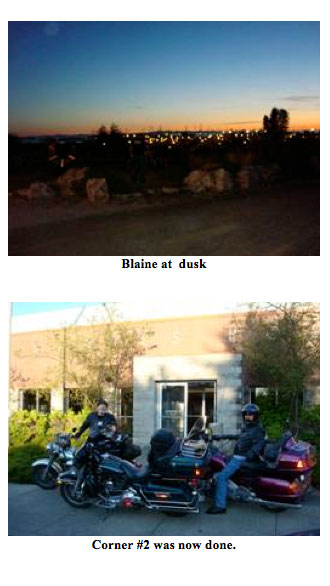
Copyright © 2017 From My Isle Seat
www.vicsocotra.com
Walk Like A Japanese
Purposeful Japanese people walking,
Perfectionists in navy, black, and gray,
Each carrying the weight of their
Ancient tribe, in a Japanese way.
Diligent Japanese people talking,
In controlled and quiet tones,
All crowded on verdant islands,
Home to gods and ancestors’ bones.
Quiet Japanese people stalking,
In moments short and rare,
Happiness, hidden somewhere deep
In the conformity they share.
copyright J.P.N. | Poetry, Etc., From Kanagawa, South of Tokyo, Japan
www.carllafong.blogspot.jp
Green Eye-Shades
Editor’s Note: You can’t accuse me of recycling this morning. Instead, we are going to go time traveling in an all-new action packed adventure in the wild and exotic world of government Program and Budget. There is so much swirling around these days that it is much easier to just live in the past. Of course, that includes 1968, and I recall not liking it that much. Too much going on and way too over the top. Like now. Not that 1968 didn’t have its moments…
– Vic
Green Eye-Shades
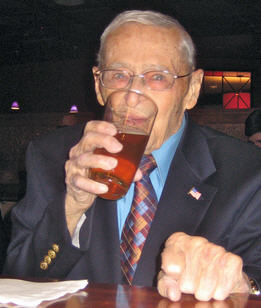
The sun was golden on the patio at Willow, filtered through the abundant greenery of the trees overhead. It was so pleasant a July day that all the tables were occupied and Jasper the bartender was running around in his manic manner, keeping the patrons well lubricated.
Mac was wearing a jacket and tie due to a medical appointment but looked cool but proper. I was wearing a jacket and clip-on bow tie, having strolled over from the office, and was happy we were in the cool darkness of the Willow’s long bar.
“We were talking about the transition from being at DIA in uniform and joining the Intelligence Community Staff as a career civilian. What was that like? I noticed the cultural change immediately when I went to Langley for my last tour in the Navy.”
Mac cleared his throat and reached for his Anchor Steam Beer. He had bullied his doctors into permitting him to have a couple beers, an act for which he was quite proud.
“When I got to Bolling in 1966, I got tagged with the Program and Budget nonsense. DIA had been charged to do build and present to the Congressional Committees a consolidated strategic intelligence budget between Army, Navy, Air Force and their subordinate elements.”
“That was Major Force Program 3, I said. I had to learn about all that crap when they sent me to be the budget staff director at Bolling. The Services still had to do their tactical intelligence- Program 2- submissions through their parent services. Everything else strategic came up through our staff.”
Mac nodded. “Yes. Title 10 and all that. Well, the Congress expected the Director of Central Intelligence to do the same thing for the whole community, and that is one of the reasons Bronson Tweedy had his eye out for me. He thought I knew what I was doing.”
“Apparently they were under the same illusion about me,” I said shaking my head. “It was mind-numbing, and I don’t think I really evr did understand it.” The happy hour white was a pinot grigio, crisp and refreshing. I had a new pen, a Pilot G-2 that made incredibly fine letters on the napkin in front of me.
“It may seem odd nowadays, since the establishment of the office of the Director of National Intelligence, but Congress really only thought the IC Staff was about the budget, not policy. Once I reported to Langley as a civilian, I got involved in the program and budget review work. My account was NSA. They initially considered having me be responsible for the DIA portfolio, but they thought better of it.”
“We called it the General Defense Intelligence Staff when I was at DIA. We found the Community Management Staff- your old IC Staff- to be irritating busybodies.” I glanced down at the bar where Liz-with-an-S was attending to some self-important-looking gentlemen in suits and caught her eye to request a re-fill.
Mac took a sip of beer. “That is the nature of Washington, to be irritating. It was decided that since I had just come from being chief of staff for DIA, that this might be a mistake, since I had just been there doing the budget. Plus, they thought I might not be able to work effectively if I was put in a position of conflict with the Agency where I had been the Number Three. Because of my long-time association with SIGINT and SIGINT activities, they gave me the NSA account.”
“That is where my former Deputy Senior Executive Jerry wound up. He was a holy terror in oversight for the Fort. They feared him. Big job. Lot of money in play.”
“I was extremely comfortable because I had many friends at NSA, and from my time working at Ft Meade in the Naval Intelligence Field Office, knew how their system worked. I was an advocate of many things that NSA was doing, but I also was a critic of what wasn’t going that well. So, I felt good about handling the NSA account.”
“Who got DIA,” I asked. “I had once assembled a list of all the GDIP Staff directors, and posted pictures of the ones I could find in the office in the Pentagon. All got lost in the 9/11 attack. The jet almost hit the staff offices head on. We were lucky the whole staff wasn’t killed like the people in the spaces in the next Wedge.”
“A good day to not be in the Pentagon. A young Air Force vet named Marty Hurwitz got the DIA account,” he said.
“Marty! I actually know him. He must have moved down from Langley to take the job. He was there for, like, 20 years. A real pro, and a good friend to the Commands outside DIA when the Agency didn’t want to play nice.”
“If you want a friend in Washington,” said Mac with a droll smile.
“I know. I ought to go to the pound. I am glad I am not doing that any more.”
“I didn’t really care for that type of work. And even though I enjoyed my new role with the IC staff and my work with NSA, I still never really liked the program and budget cycle and the ridiculously complex process arduous nature of what the U.S. government forces itself through each year.
“It certainly taught me more things I didn’t want to know than any other job I have had.” I rolled my eyes thinking about the tiny interior office in the Pentagon and the endless hours at the desk or in meetings.

Liz-S clearly recognized my distress and topped my glass off. “There there,” she said smoothly. No bad eyeshade people are going to come and take you away.”
“Thankfully I only had the NSA account for two cycle. Even though I did it reasonably well, I never felt comfortable.”
“It was way out of my comfort level, and when you talk to people about the endless racking-and-stacking drills about requirements and available cash to meet them, their eyes cloud over.”
“With good reason. What happened next?”
“Well, in the latter part of 1973 — after Bill Colby became DCI and Sam Wilson became the Director of the IC staff- there was a new problem the community had to deal with, and they needed a go-fer. I kind of became a jack-of-all-trades and a floating representative on the IC Staff, as did Jack Thomas.”
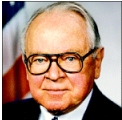
(MG Jack Thomas, USAF-Ret.)
“General Thomas was there when I arrived at Langley twenty years later, I said with a start. The General was an amazing guy, quiet and kind, and he must have had more than a half-century in the business.”
“At least. He was one of the first Air Force general officers who was not a rated pilot. I managed to get out of being a go-fer after a couple years, trying to damp down the mistrust of the IC Staff. People thought we were scheming to undermine the authority of the Agencies. But then something else came up. In 1975, I became a special assistant to Sam Wilson who, in effect, was working with Colby to set up a special project. It is still around and still working. But that is one of the things we agreed not to talk about,” said Mac. “I still have friends up there and they might not approve hearing about it from the Willow.”
Old Jim put down his Budweiser long-neck firmly on the bar at his place at the Amen Corner and growled that he swore he would never disclose a thing, so long as we quit talking about the budget. I think Mac and I were both happy to do that.
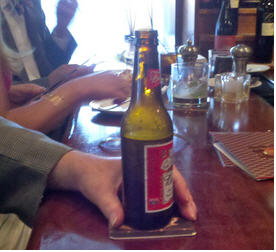
Copyright 2017 Vic Socotra
www.vicsocotra.com
